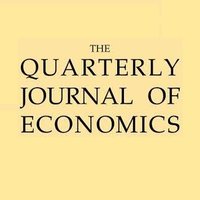
Yasu Koike-Mori
@yasukoike_mori
Ph.D. Student @UCLA | Macro, Trade, and Network | 24/25 Job Market | Dissertation Fellow 2024 @ Fed Board | Former economist at the Bank of Japan
ID: 1582024563931566081
http://yasutakakoike-mori.com 17-10-2022 15:04:00
13 Tweet
709 Followers
733 Following

New paper on welfare measurement with non-homothetic preferences. Our paper is inspired by recent excellent work of Xavier Jaravel and Danial Lashkari . We have a different angle on the problem we are excited to share. I think the intuition is pretty neat! econ.ucla.edu/arielb/welfare…

The official UK annual inflation rate understates welfare-relevant inflation for the poorest households by about 0.5 ppts per year and overstates it for the richest households by 0.25 ppts per year, from David Baqaee, Ariel Burstein, and Yasutaka Koike-Mori nber.org/papers/w30549


Recently accepted by #QJE, “Welfare and Output with Income Effects and Taste Shocks,” by Baqaee (@Dbaqaee) and Burstein (Ariel Burstein): doi.org/10.1093/qje/qj…

Marginal costs rise by 0.6% for every 1% of suppliers lost, pinning down micro value of supplier churn. Effect is big enough it can explain most of aggregate productivity growth, from David Baqaee Ariel Burstein Cédric Duprez, and Emmanuel Farhi nber.org/papers/w31231


#QJE Feb 2024, #10, “Measuring Welfare by Matching Households across Time,” by Baqaee (@Dbaqaee), Burstein (Ariel Burstein), and Koike-Mori (Yasu Koike-Mori): doi.org/10.1093/qje/qj…

I am pleased to share that I have started a dissertation fellowship Federal Reserve . I will be staying in DC for the summer, working on my thesis.


We have started our Global Economic Networks Workshop in Tübingen today with an exciting keynote by Andreas Moxnes and many more great contributions on the program: dropbox.com/scl/fi/2st96vz… 1/n


New CEPR Discussion Paper - DP19263 Sufficient Statistics for Measuring Forward-Looking #Welfare David Baqaee, Ariel Burstein & Yasu Koike-Mori UCLA ow.ly/2U5v50SFOyj #CEPR_LE #CEPR_MG #economics

